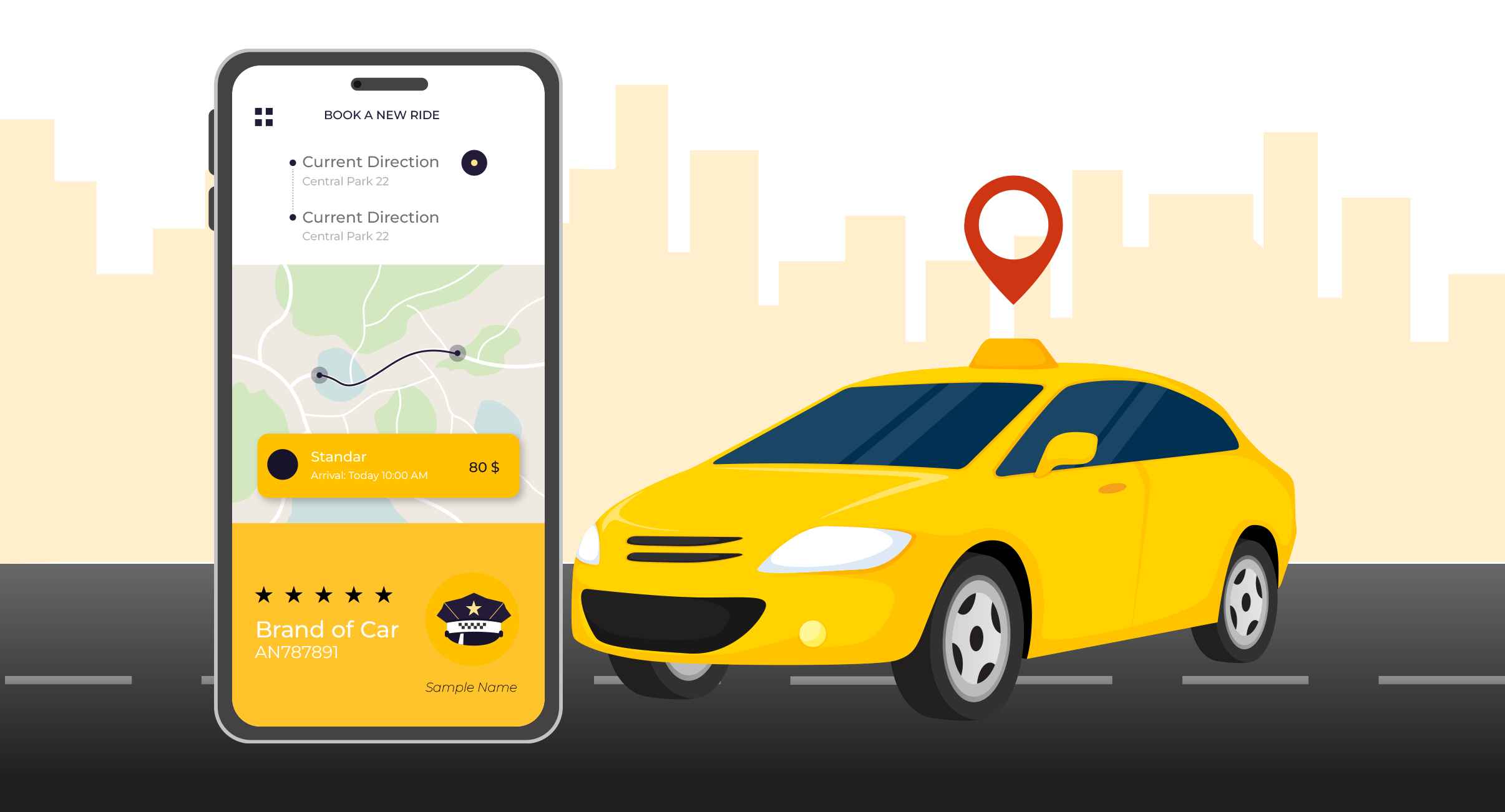Starting a taxi business can be a smart and profitable choice, especially with the growing need for convenient transportation. Whether you’re planning to start small with one car or grow into a large taxi fleet, this guide will help you understand the steps, costs, and requirements involved. The demand for taxi services continues to rise, as more people choose ride options over other transportation methods. To get started, you’ll need the right license and a clear business plan.
You’ll also need to consider factors like fleet management, insurance, and safety for both drivers and passengers. Modern technology like taxi dispatch software with apps can make your business run smoothly and improve customer experience. By focusing on branding, creating a strong online presence, and using effective marketing, you can stand out in a competitive market and grow your taxi service over time.
Research and Planning
- Understanding the Market
Before starting a taxi business, it's essential to thoroughly understand the market. Conduct thorough market research to identify:
- Demand Analysis: Survey local demand, peak usage times, and trip types (e.g., short city rides, airport transfers).
- Competition Analysis: Identify main competitors, analyze their strengths and weaknesses, pricing models, and customer reviews.
- Customer Demographics: Understand potential customer demographics, segment the market, and tailor services accordingly.
- Regulatory Environment: Research local regulations, licensing, insurance, and vehicle standards.
- Technological Trends: Stay updated on technological trends like GPS tracking and mobile payment systems.
-
Related Article: How To Grow The Taxi Business: The Top 7 Rational Methods
- Creating a Business Plan
A solid business plan is the foundation of starting a taxi business. It should include:
1. Executive Summary
- Brief overview of your taxi business, mission statement, goals, and key strategies.
2. Business Model:
- Decide on a traditional taxi service or private taxi hire business.
- Outline service offerings, pricing strategy, and additional charges.
3. Startup Costs:
- Vehicle Purchase or Lease: Costs of buying or leasing vehicles.
- Licensing and Permits: Costs for business licenses and taxi operation permits.
- Insurance: Comprehensive coverage costs.
- App Development or Purchase: Costs for a custom or white label taxi booking app.
- Office Setup: Office space, equipment, and utilities costs.
- Marketing: Initial marketing campaign budget.
4. Revenue Projections:
- Estimate earnings based on fare rates, ride numbers, and market demand.
- Consider best-case, worst-case, and most likely scenarios.
5. Operational Plan:
- Outline daily operations, driver recruitment, vehicle maintenance, and customer service.
- Describe the booking, dispatching, and payment handling process.
- Detailed roles and responsibilities of key personnel.
6. Marketing Strategy:
- Plan customer acquisition through online marketing, local partnerships, and promotions.
- Utilize digital marketing channels and develop a referral program.
- Partner with local businesses and event organizers.
Registering Your Taxi Business
- Legal Requirements
Registering for your taxi business involves several essential steps to ensure compliance with local regulations and to provide safe, reliable services to your customers. Here’s a detailed look:
1. Business Name Registration:
- Choose a unique and memorable name for your company that reflects your brand and services.
- Make sure the name is not already in use or trademarked by another company.
- Register your business name with the relevant local authorities or government agency.
2. Licensing:
- Obtain the necessary licenses and permits from your local government to legally operate your taxi business.
- This typically includes a general business license and specific taxi operation permits.
- Check with local transportation authorities for any additional permits required, such as special licenses for airport pickups or interstate travel.
3. Insurance:
- Purchase comprehensive insurance that covers your vehicles, drivers, and passengers.
- Essential insurance types include liability insurance, collision insurance, and personal injury protection.
- Ensure the insurance policy meets or exceeds the minimum coverage requirements set by local regulations.
4. Vehicle Inspection:
- Ensure all your vehicles meet the required safety and emission standards.
- Regularly inspect your vehicles to maintain high safety standards and reliability.
- Obtain and display any required inspection certificates or stickers on your vehicles.
Developing a Taxi Booking App
- Passenger App
- User-Friendly Interface: Easy booking process with clear navigation.
- Payment Options Multiple secure payment methods, including credit cards, mobile wallets, and cash.
- Real-Time Tracking: Allow passengers to track their rides in real-time.
- Driver App:
- Ride Requests: Receive and accept ride requests quickly.
- Navigation: Integrated maps and GPS for efficient routing.
- Earnings Tracker: Daily and weekly earnings summaries for drivers.
- Admin Panel
- Monitoring Performance: Track driver and vehicle performance.
- Managing Payments: Handle ride payments and driver payouts.
- Customer Support:Address customer queries and feedback promptly.
- Buying vs. Leasing
- Long-term savings as you own the vehicles outright.
- No restrictions on mileage or modifications.
- Potential tax benefits through depreciation.
- Requires significant upfront investment.
- Responsible for all maintenance and repairs.
- Vehicles depreciate over time, reducing resale value.
- Lower initial costs and easier cash flow.
- Flexible terms with options to upgrade to newer models regularly.
- Maintenance and repairs might be included in the lease agreement.
- Potentially higher costs over the long term due to lease payments.
- Restrictions on mileage and modifications.
- No ownership equity in the vehicles.
- Vehicle Requirements
- opt for vehicles with good fuel economy to reduce operational costs.
- Consider hybrid or electric vehicles for even greater savings on fuel and environmental benefits.
- Ensure vehicles are spacious and comfortable to enhance passenger satisfaction.
- Include features such as air conditioning, comfortable seating, and ample legroom.
- Choose vehicles known for their reliability and low maintenance costs to minimize downtime.
- Regularly maintain and service your vehicles to ensure they remain in good condition and safe for passengers.
- Recruiting Drivers
- Look for drivers with extensive driving experience and familiarity with the local area
- Prioritize candidates who have previously worked in the taxi or ride-sharing industry.
- Check clean driving records to ensure safety and reliability.
- Competitive Pay and Incentives.
- Offer competitive salaries to attract high-quality drivers.
- Implement incentive programs, such as performance bonuses and referral bonuses, to motivate and retain drivers.
- Comprehensive Training
- Train drivers to be courteous, professional, and friendly to enhance passenger experience.
- Teach effective communication skills and problem-solving techniques to handle any issues that may arise.
- Ensure drivers are proficient in using the driver app to manage ride requests, navigation, and payment processing efficiently.
- Provide hands-on training sessions and create a user manual for reference.
- Emphasize the importance of road safety and adherence to traffic laws. Train drivers in defensive driving techniques and how to handle emergencies.
- Train drivers in defensive driving techniques and how to handle emergencies.
- Implement protocols for vehicle maintenance checks and cleanliness to ensure passenger safety and comfort.
- Online Presence
- Create a user-friendly, professional website that showcases your services, rates, and contact information.
- Include an online booking feature to make it convenient for customers to book rides.
- Consider utilizing the specialized website development services to ensure your platform meets all your business needs.
- Maintain active profiles on major social media platforms like Facebook, Instagram, Twitter, and LinkedIn.
- Regularly post updates, promotions, customer testimonials, and engaging content to build a community and attract followers.
- Partnerships Collaborating with local businesses can significantly expand your customer base. Consider the following strategies:
- Partner with local restaurants, bars, and shopping centers to offer exclusive deals or discounts for their customers.
- Place flyers or business cards in these establishments to increase brand awareness.
- Collaborate with hotels to provide transportation services for their guests.
- Offer special rates or packages for hotel guests and ensure seamless communication with hotel staff for booking arrangements.
- Promotions Launch promotional campaigns to attract new customers and retain existing ones. Here are some ideas:
- Offer special discounts or promotional codes for first-time users to encourage them to try your service.
- Promote these offers through your website, social media, and local advertisements.
- Implement a referral program where existing customers can earn bonuses or discounts for referring new customers to your service.
- Encourage satisfied customers to share their experiences and refer friends and family.
- Launch seasonal promotions, such as holiday discounts or back-to-school specials, to attract customers during peak times.
- Use targeted advertising to reach specific customer segments and maximize the impact of your promotions.
- Day-to-Day Management
- Track all rides in real-time to ensure punctuality and efficiency.
- Monitor driver locations, ride statuses, and customer pick-up/drop-off points.
- Address any issues or delays promptly to maintain high service standards.
- Ensure smooth and secure transactions through the app’s payment gateway.
- Monitor payment statuses and resolve any issues, such as failed transactions or discrepancies.
- Offer multiple payment options to cater to different customer preferences.
- Collect customer feedback after each ride to gauge satisfaction levels.
- Analyze feedback to identify areas for improvement and implement necessary changes.
- Use positive feedback in marketing campaigns to build your brand’s reputation.
- Financial Management
- Keep detailed records of all income from rides, including fare amounts and any additional charges.
- Track all expenses, such as vehicle maintenance, fuel costs, driver salaries, and marketing expenses.
- Use accounting software to automate record-keeping and ensure accuracy.
- Regularly review financial statements, including income statements, balance sheets, and cash flow statements.
- Identify trends and areas where expenses can be reduced, or income can be increased.
- Compare actual performance against budgeted projections to assess profitability and make informed decisions.
- Calculate key financial metrics, such as gross profit margin, net profit margin, and return on investment (ROI).
- Conduct break-even analysis to determine the minimum rides needed to cover costs.
- Use financial insights to plan for future investments, expansions, or adjustments in pricing strategies.
- Expanding Fleet
- Gradually increase the number of vehicles in your fleet to meet growing customer demand.
- Consider a mix of vehicle types, including sedans, SUVs, and luxury cars, to cater to diverse customer preferences and needs.
- Ensure new vehicles are fuel-efficient, comfortable, and reliable to maintain high service standards.
- Recruit additional drivers to operate the expanded fleet and ensure timely service.
- Maintain rigorous hiring standards, including background checks and driving record verification, to ensure driver reliability and safety.
- Provide ongoing training to new drivers to maintain consistent service quality.
- Enhancing Services
- Offer dedicated airport transfer services, providing convenience for travelers.
- Partner with airlines, travel agencies, and hotels to create bundled offers and increase visibility.
- Ensure timely pickups and drop-offs and assist with luggage to enhance the customer experience.
- Provide corporate transportation services for businesses, offering reliable and professional rides for employees and clients.
- Establish contracts with local businesses and corporate clients for regular transportation needs.
- Introduce premium ride options with luxury vehicles for customers seeking high-end experience.
- Price premium services appropriately to reflect the added value and exclusivity.
- Provide transportation for special events such as weddings, conferences, and parties.
- Offer packages and group discounts for event organizers and participants.
- Ensure timely and coordinated services to manage large groups efficiently.
- Developing a User-Friendly App:
- Securing Necessary Licenses and Permits:
- Building a Reliable Vehicle Fleet:
- Hiring and Training Qualified Drivers:
- Implementing Competitive Pricing Strategies:
- Launching a Targeted Marketing Campaign:
In today's digital age, having an app is essential for a taxi business. A white label taxi booking app is a cost-effective solution. It includes three main components:
The Passenger App helps manage your business by:
The Driver App helps manage your business by:
The admin panel helps manage your business by:
Acquiring Vehicles
When starting a taxi business, one of the crucial decisions is whether to buy or lease your vehicles. Both options come with their pros and cons:
1. Buying Vehicles:
Pros:
Cons:
2. Leasing Vehicles:
Pros:
Cons:
Choosing the right vehicles for your taxi business is essential for operational efficiency and customer satisfaction. Consider the following criteria:
1. Fuel-Efficient:
2. Comfortable:
3. Reliable:
The success of your taxi business heavily depends on the quality of your drivers. Here's how to ensure you hire the best:
1. Experienced and Reliable Drivers:
2. Background Checks:

Training
Providing thorough training to your drivers is crucial for maintaining high standards of service and safety. Focus on the following areas:
1. Customer Service
2. App Usage:
3. Safety Protocols
How to Market Your Taxi Business
Establishing a strong online presence is essential for attracting and keeping customers. Here’s how to enhance your taxi business's visibility:
1. Professional Website:
2. Social Media Platforms:
1. Local Businesses:
2. Hotels
1. Discounts for First-Time Users:
2. Referral Bonuses:
3. Seasonal Promotions:
Managing Operations
Effective management of daily operations is essential for the success of your taxi business. Utilize the admin panel of your taxi booking app to streamline and oversee the following aspects:
1. Monitor Rides:
2. Handle Payments:
3. Customer Feedback:
Maintaining a clear and organized financial record is crucial for the sustainability and growth of your taxi business. Focus on the following practices:
1. Income and Expense Records:
2. Financial Performance Review:
3. Profitability Analysis:
Scaling Your Business
As your taxi business gains traction and demand increases, expanding your fleet is a crucial step. Here's how to approach it:
1. Add More Vehicles:
2. Hire More Drivers:
Diversifying your service offerings can attract a broader customer base and create new revenue streams. Consider the following additional services:
1. Airport Transfers:
2. Corporate Transportation:
3. Premium Rides:
4. Special Event Services:

How to Start a Taxi Business Like Uber
To emulate Uber's success, begin by creating a streamlined taxi booking app. Ensure it includes essential features like real-time tracking, multiple payment options, and driver ratings for a seamless user experience.
Prioritize obtaining all required licenses and permits for operating a taxi business legally. This includes business registration and local operational permits specific to your area.
Invest in a fleet of comfortable and fuel-efficient vehicles. Consider leasing options initially to manage startup costs effectively while ensuring high service standards.
Recruit experienced drivers with clean records. Provide comprehensive training in customer service and app usage to maintain service quality and reliability.
Analyze market rates and competition to set competitive pricing strategies that attract customers while ensuring profitability and sustainability.
Utilize online marketing channels and local partnerships to promote your taxi service effectively. Focus on building brand awareness and attracting your target demographic.
Starting a taxi service involves strategic planning across these areas to establish a successful business model that meets customer demands and regulatory requirements effectively.
Conclusion
Starting a taxi business involves careful planning, investment, and management. By understanding the market, registering your business, developing a robust taxi booking app, and implementing effective marketing strategies, you can build a successful and profitable taxi service. Whether you start with one car or aim to become the next Uber, this guide provides the essential steps to turn your taxi business dream into reality.



